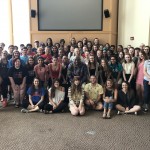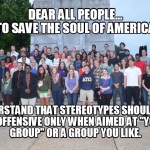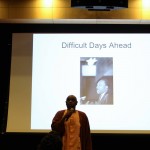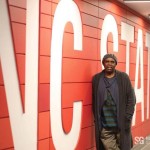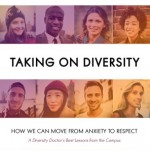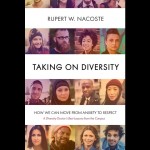 Â Â Â
  Â
   If you have read the cover of my newest book “Taking on Diversity†you will have noticed that the subtitle is “A Diversity Doctor’s Best Lessons from the Campus.â€Â I did not choose that subtitle nor did I suggest the moniker of “Diversity Doctor.â€Â Prometheus Books, my publishing house decided on that way of marketing the book. I feel a pinch every time I read “…diversity doctor.â€
Even so, it seems to help people pin down the point of my book. Here for example is an excerpt from a very recent review of “Taking on Diversity.â€Â
 A Diversity Doctor’s Best Lessons from the Campus; Book Review By Kathy-Anne Jordan, .Ed.D, is Associate professor of education at Mercy College in New York.
 “In Taking on Diversity, Rupert W. Nacoste examines the struggles and emotions related to our encounters and interactions with diverse others and provides strategies to facilitate peaceful intergroup relations. Neodiversity is the term he uses to describe the various social markers of difference—race, class, religion, ability, sexual orientation, and so on—that we encounter on a daily basis and the anxiety that often results from interacting with others who vary from us in terms of one or more of these markers. Neodiversity, then, not only describes the current social landscape, it refers to our encounters with difference across a variety of contexts, and therefore requires that we learn how to adapt; specifically, it requires change in how we think about and respond to diversity.   Â
    At a time when students on college campuses across the United States are posting photos of themselves in Blackface, and college administrators are responding to an overall increase in racial incidents and protests, Nacoste’s work provides a valuable contribution to a much-needed conversation on race and underscores the importance of teaching young people how to accept and respect, rather than simply tolerate, diverse others
   Nacoste’s approach to teaching has earned him the respect of his students because it is infused with passion, life experiences, and personal values; he also provides a safe space for honest, open dialogue, which is extremely important in a classroom of over fifty neodiverse students discussing sensitive topics. In his course on interpersonal relationships and race, [along with the social psychology] students learn historical truths about America’s racial past, which replace the sanitized and “sales pitch†versions of American history—commonly taught in middle and high schools—that breed ignorance, insensitivity, and intolerance.
    In preparing his students for the neodiversity that confronts them, Nacoste teaches them about the social psychology of interpersonal/intergroup dynamics; they learn to evaluate and respond more effectively to the intergroup tensions that emerge when people from different backgrounds interact with each other. Through first-person narratives included within each of the eight chapters, the book offers a brief, but candid glimpse into the minds of young people as they struggle to understand and resolve the dilemmas of diversity within their own lives. Although the work mainly focuses on the experiences of college students, readers will immediately recognize that the book offers useful insights that can benefit all of us.â€
 That review really captures the heart of my book. Even so, I am not a “diversity doctor.â€
 I am a social psychologist.
 See, I just can’t let it go.       Â
 You can find the complete review in Global Education Review, 3 (4). 176-177 which you can access here: http://ger.mercy.edu/index.php/ger/article/viewFile/337/232

